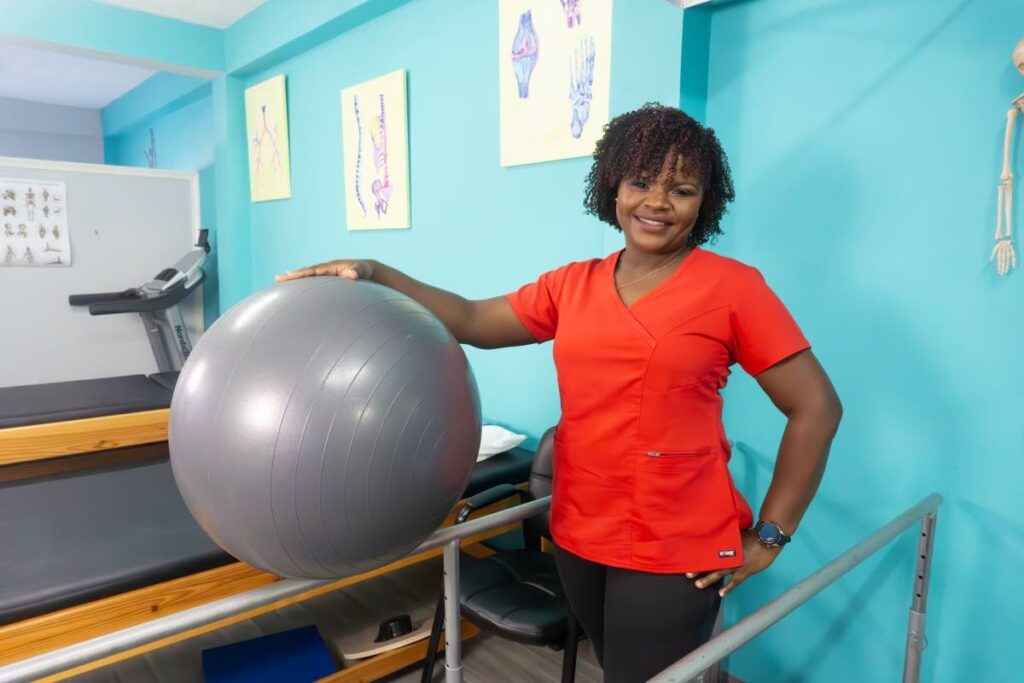How physiotherapy helps breast cancer survivors

BAVINA SOOKDEO
Dr Shannon John and her partner Denielle Jack are on a mission to improve the quality of life for patients in need of physiotherapy services.
John, who co-founded the Therafit Physiotherapy Clinic in 2020, explained to Newsday the critical role of physiotherapy for breast cancer survivors.
John has specialised in areas such as lymphoedema (fluid retention) and wound management, as well as pelvic health. Her work in these specialised fields has been driven by a commitment to bridging healthcare gaps in the community.
Founded amidst the covid19 pandemic, Therafit Physiotherapy Clinic quickly established itself as a lifeline for patients seeking essential healthcare services. With branches in Arima and Montrose Chaguanas, the clinic has been providing physiotherapy services for all age groups, from infants to the elderly.
For breast cancer survivors, the road to recovery is often a complex one. The treatment may involve chemotherapy, radiation therapy, and surgical procedures like mastectomy (removal of the entire breast) or lumpectomy (removal of a lump). In some cases, lymph nodes may be removed for testing or because cancer has spread to them, increasing the risk of lymphoedema.
Lymphoedema is characterised by swelling of the arms or legs caused by blockage, damage, or removal of lymph nodes, a crucial part of the immune system. While there is no cure for lymphoedema, it can be effectively managed, especially when diagnosed early.
“The earlier the diagnosis, the better the prognosis, and the less swelling the patient will experience,” explained John.
“Treatment can be provided by a physiotherapist specialised in lymphoedema management. It includes manual lymphatic drainage, compression with the use of compression bandaging, exercise and compression garments in the form of a compression sleeve."The extent of treatment depends on the stage of the patient's lymphoedema. Treatment aims to improve functionality and maintaining quality of life.
But John added, "Not all patients develop lymphoedema after a mastectomy, but physiotherapy is still needed to maintain range of motion and strength of the arm on the affected side, management of the surgical scar and exercise to assist with fatigue and weakness after chemotherapy.”
Asked about the challenges and benefits of physiotherapy, John emphasised the importance of consistency to achieve the best results in patients with breast cancer and lymphoedema.
“Particularly in the management of lymphoedema,” she said, “compression bandaging may be a lengthy process, but it has guaranteed results, once the patient adheres to it.
"We, as physiotherapists, are here to assist patients to achieve their goals by prescribing exercise and formulating a home exercise programme that they must adhere to in order to obtain the best results.”
The benefits are substantial, she said, and can lead to improved functionality of the affected arm and hand, and hence quality of life. Patients become able to care for themselves again, and in many cases, return to work, boosting their self-worth and self-esteem.
Is physiotherapy for breast cancer patients costly?
John responded, “We at Therafit Physiotherapy Clinic understand that illness is no respecter of persons, so we try our best to provide a service that is affordable to persons of all socioeconomic backgrounds. We offer discounts and payment plans for lymphoedema patients, because we know treatment can be long and costly."
Physiotherapy is also covered by health insurance once a patient has a referral letter from a doctor.
During October, which is Breast Cancer Awareness Month, Therafit is offering a 20 per cent discount on consultations for breast cancer and lymphoedema patients.
Asked if she would like to send a message to people with breast cancer or who have had surgery for it, she said many patients do not know the signs and symptoms of lymphoedema, which can lead to a delay in diagnosis. So, she said: "I would like to urge all breast cancer patients, if you have had lymph nodes removed, or radiation therapy, you should look out for the following early signs of lymphoedema:
– heaviness or tightness of the arm
– any form of swelling of the chest wall, arm or hand
– restricted range of motion
– hardening or thickening of the skin.”


Comments
"How physiotherapy helps breast cancer survivors"